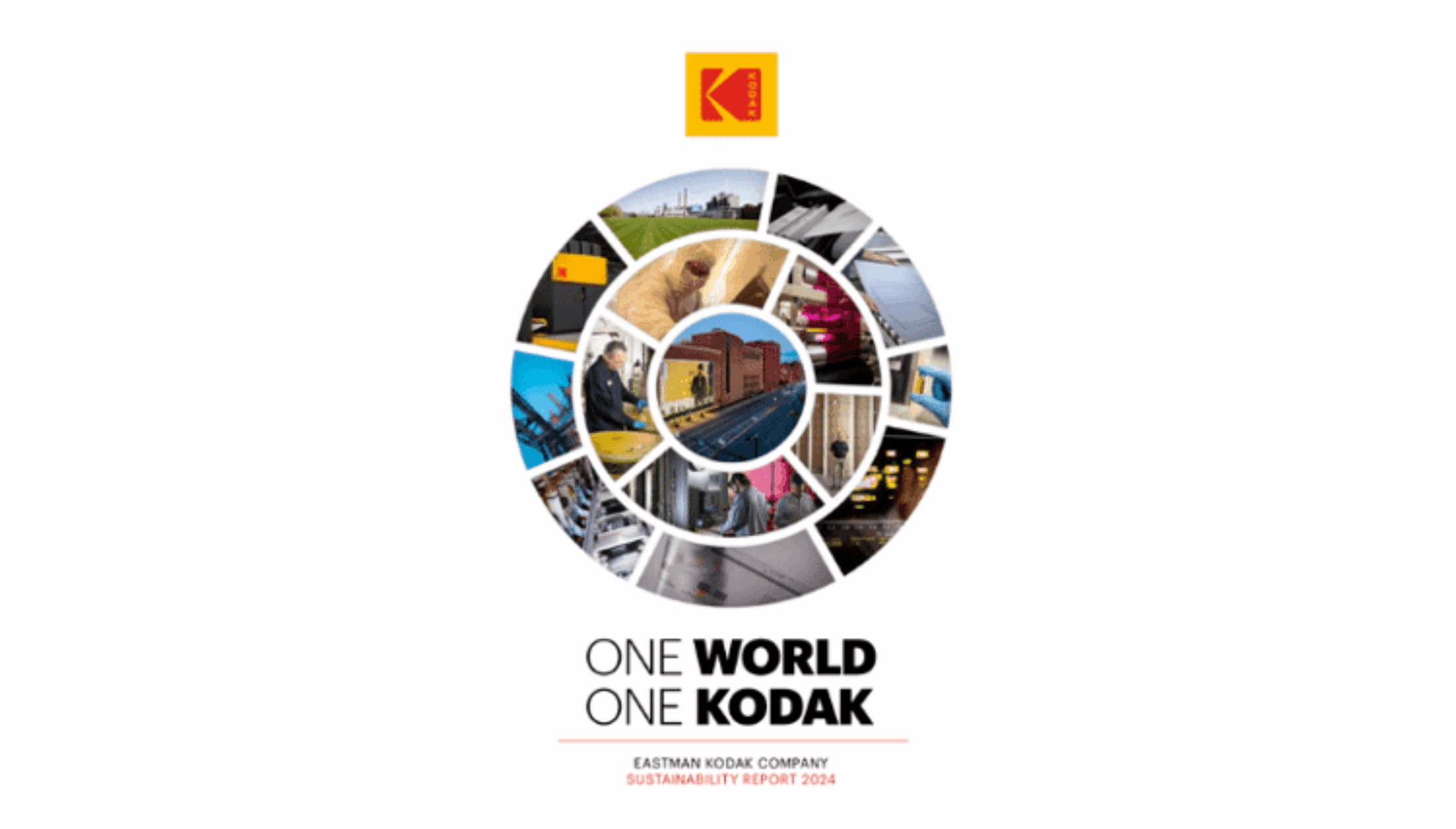Kodak’s 2024 Sustainability Report, “One World, One Kodak,” demonstrates a strong commitment to environmental and social responsibility.
The report highlights impressive reductions in greenhouse gas emissions (56%) and water withdrawal (31%) and aims for zero waste by 2025. Notably, Kodak is pioneering double materiality assessment in the printing industry, aligning sustainability with financial reporting, and showcasing its products’ environmental benefits.
Sadly sustainability reporting is falling down the priority list for many companies. They realise it’s hard, complicated and expensive. They also realise they’ll never be completely squeaky clean in terms of their environmental sustainability. Where’s the surprise in that? Sustainability reporting is inevitably challenging, because sustainability is a complex pattern of compromises and trade-offs. It’s also inevitable that once companies start to evaluate their environmental impacts, they start having second thoughts about reporting their activities. So it’s extremely encouraging when companies stick with it and publish their annual sustainability stories, as Kodak has done.
Sustainability is a central part of Kodak’s narrative, the company having survived a near death experience some years ago. The economic sustainability of the company tells its own tale: Kodak is still here and is thriving. Kodak’s environmental sustainability ethic is evidenced in its products: Sonora process free plates, Prosper digital presses for on demand production, imprinting systems, and water based Kodachrome and Ektachrome inks. The company is also committed to supporting customers who want to have both conventional and digital production models for their clients. This makes for a more sustainable printing industry.
Kodak’s Sustainability Report, One World, One Kodak summarises the company’s global sustainability activities from 2023 to Q3 2024. It confirms the company’s commitment to reducing waste, cutting its carbon footprint and using energy more efficiently. Kodak aims to have zero waste at company sites worldwide by 2025. In 2023 99% of waste generated was diverted from landfill and incineration, however that does not include waste to energy diversion. Greenhouse gas emissions were targeted to be cut by 25% this year but efforts have lead to a much more impressive 56% reduction. Water withdrawal was also supposed to be down by 25% this year, but Kodak has managed to cut it by 31% in the 2023/Q32024 period.
Moving forward, in 2025 Kodak plans to complete a double materiality assessment of its business, evaluating both sustainability as well as the business’s finances. This makes Kodak the first company in our industry to treat sustainability on a par with financial reporting. Double materiality is a core requirement of the European Union’s recently enacted Corporate Sustainability Reporting Directive.
Kodak has made further strides in enhancing employee health, safety, and well-being, and its community impact initiatives. This brings the company into closer alignment with the United Nations Sustainable Development Goals.
The One World, One Kodak report follows the Global Reporting Initiative (GRI) guidelines for sustainability reporting. There are three GRI standards: Universal, Sector and Topic standards. Although there are no specific sector standards for the printing industry, all organisations can use GRI’s modular universal standard which covers environmental, social and operational sustainability. One World, One Kodak is impressive and thorough work, well presented. But perhaps the most compelling part of the report is Kodak’s CEO and Chairman Jim Continenza’s summing up of the company’s commitment to sustainability. He says that “sustainability is an integral part of our growth strategy and a reflection of our corporate values.”
You can downloaded the full report at https://www.kodak.com/go/sustainability.
